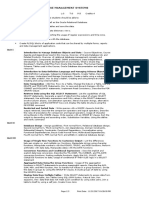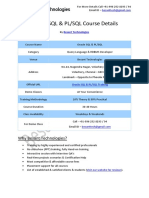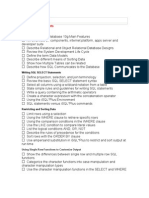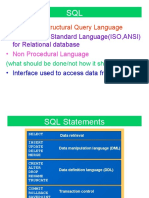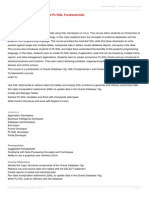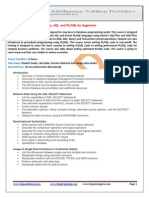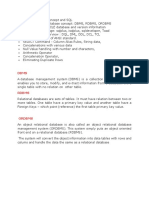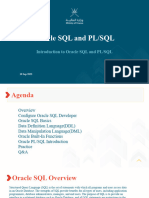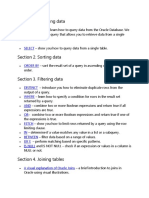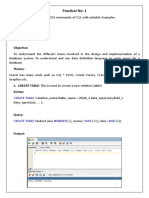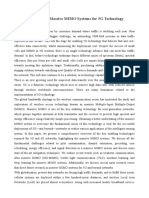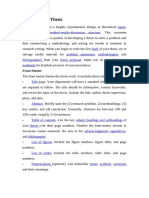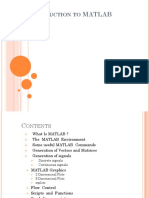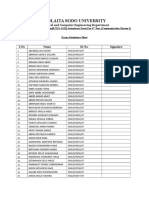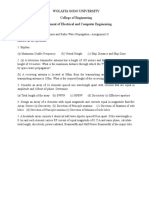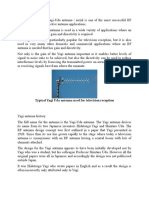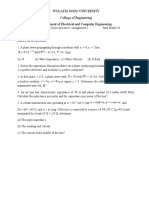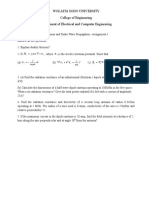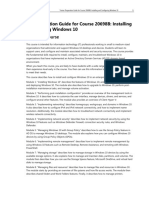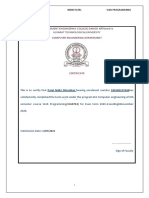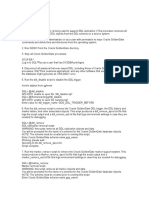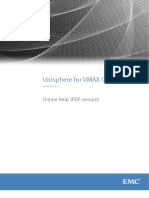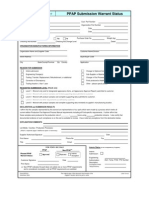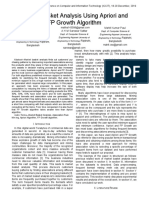0% found this document useful (0 votes)
121 views5 pagesSystem Statements: Dbms Concepts Writing Basic SQL SELECT Statements
The document discusses concepts related to database management systems (DBMS) and SQL. It covers topics such as database models, normalization, relational and object-relational DBMS, SQL commands including DDL, DML, DCL, and TCL. It also discusses SQL database objects, functions, constraints, joins, subqueries, views, sequences, indexes, synonyms, and PL/SQL. The document provides information on writing basic SQL statements and examples of using various SQL features and commands.
Uploaded by
kattaswamyCopyright
© © All Rights Reserved
We take content rights seriously. If you suspect this is your content, claim it here.
Available Formats
Download as DOC, PDF, TXT or read online on Scribd
0% found this document useful (0 votes)
121 views5 pagesSystem Statements: Dbms Concepts Writing Basic SQL SELECT Statements
The document discusses concepts related to database management systems (DBMS) and SQL. It covers topics such as database models, normalization, relational and object-relational DBMS, SQL commands including DDL, DML, DCL, and TCL. It also discusses SQL database objects, functions, constraints, joins, subqueries, views, sequences, indexes, synonyms, and PL/SQL. The document provides information on writing basic SQL statements and examples of using various SQL features and commands.
Uploaded by
kattaswamyCopyright
© © All Rights Reserved
We take content rights seriously. If you suspect this is your content, claim it here.
Available Formats
Download as DOC, PDF, TXT or read online on Scribd
/ 5





